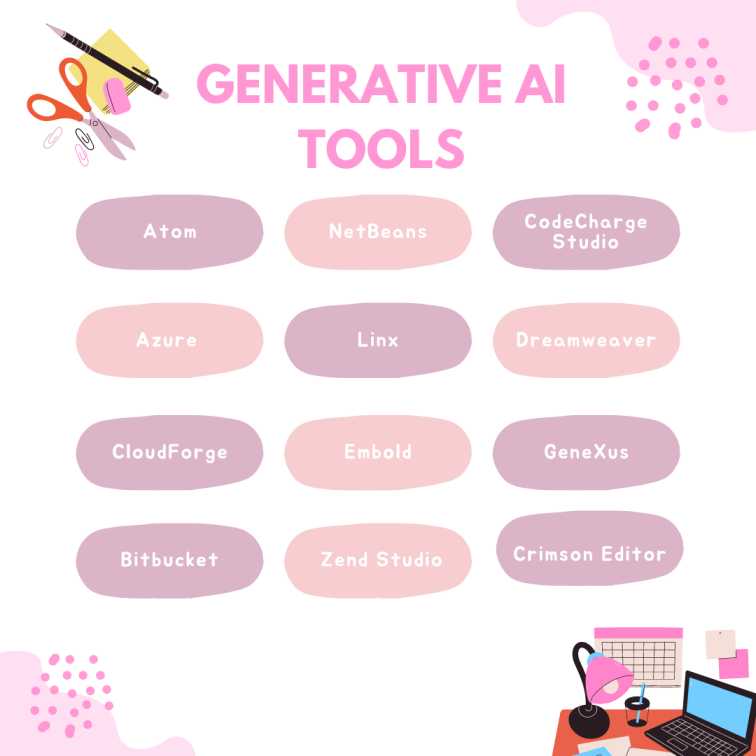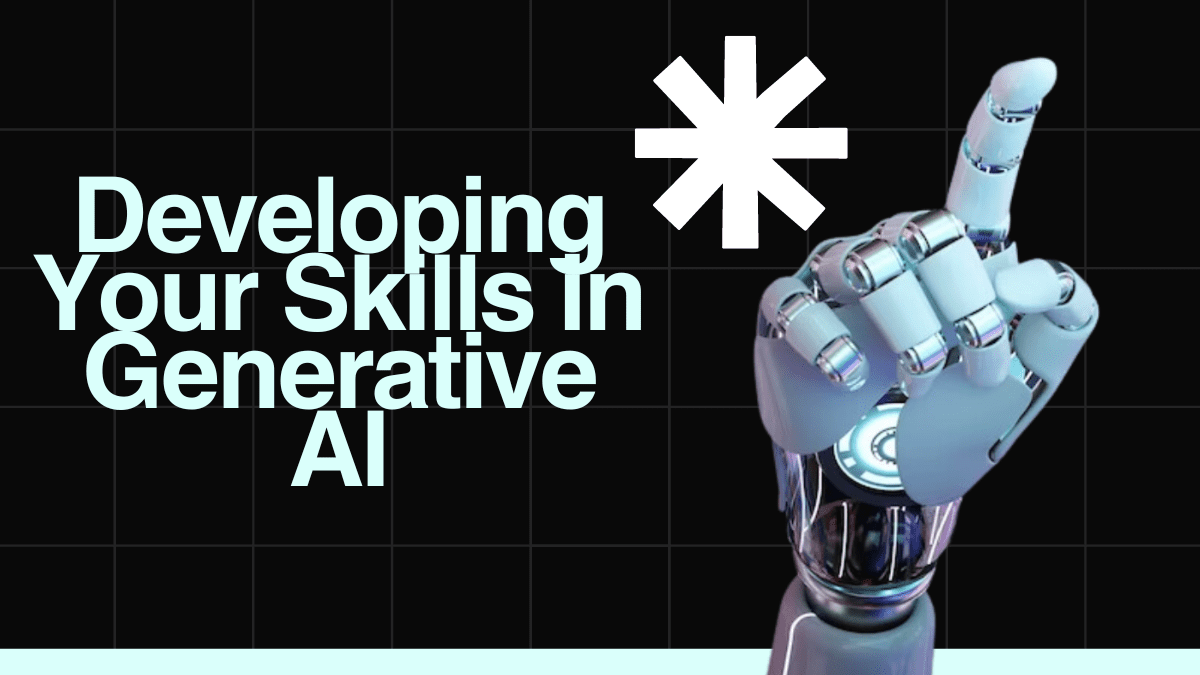Table of Contents
Last updated on July 25th, 2024 at 10:54 am
Artificial intelligence encompasses tasks related to replicating human brain activities such as learning, reasoning, language comprehension, problem-solving abilities, etc., by computers or software-driven robots. Thus, AI is a modern-day technology experiencing speedy evolution with each passing day to match and surpass human intelligence. Machine learning, deep learning, etc., are different specialised verticals of AI.
In this article, we shall explore in detail the answer to ‘what is generative AI’. We shall also learn about generative AI tools, skills in generative AI and generative AI courses.
What is Generative AI?
There are several types of artificial intelligence. Some are purely reactive with expertise in only one field, while some respond with limited memory. Robots with “theory of mind” and “self-awareness” are being researched and shall be the future of AI.
However, another type of AI has gained tremendous momentum in recent years—generative AI. Generative AI is a vertical of artificial intelligence tasked with developing new, imaginative, or futuristic content in the form of images, video, written content, etc., from available data. Applications of generative AI are plentiful, including police departments, healthcare, marketing, security, etc.
In the modern digital economy, generative AI plays a major role, and hence, learning skills in generative AI and expertise in handling generative AI tools can give aspirants a significant edge in the job market.
What is Generative AI and its benefits?
Generative AI leverages its huge data bank and realises human inputs to produce desired results. The advantages of generative AI abilities are multi-fold, and benefits can be obtained across many sectors. Some of the benefits of generative AI are as follows –
-
Automation
In digital marketing, even small business houses look forward to automation in some of their basic or routine functions. The main purpose is to deploy fewer human resources and achieve speedier execution.
-
Customisation
With the help of generative AI, business houses can offer extremely tailor-made services. Based on user inputs and preferences, generative AI activates its recommendation engine to suggest user similar products, services, visuals, articles, etc.
-
Optimisation
Client behavioural patterns and preferences both change drastically over time. However, organisations must withstand challenges and still be competitive. Generative AI can boost creativity and product design optimisation.
-
Enhanced service experience
Generative AI enhances customer service experience to the next level. Customers may clarify most of their queries with the chatbot services around the clock. Thus, clients get better services, and organisations reduce the cost of excess manpower.
-
Reduction in cost and time
The creativity of generative AI in automation reduces production processes, thus saving both cost and time. Generative AI also analyses client reviews and helps create acceptable, cost-effective, futuristic product designs.
-
Enhanced revenue and profit
When better customer service is realised, revenue increases. When cost production time is reduced, profit is enhanced.
Skills in Generative AI
To get a fair idea of ‘what is generative AI’, we need to understand the important skills in generative AI. There are a good number of institutions offering generative AI courses, which can transform the career path of any prospective candidate. Some of the most sought-after skills in generative AI are as follows –
-
Natural language processing (NLP)
Understanding natural human languages is important for replicating human intelligence. Thus, a vast amount of data is collected through different communication channels, such as emails, chats, texts, videos, etc.
-
Deep learning
This specialised type of machine learning is meant for critical (but human-like) decisions through robots. Designed after the neurons of the human brain, the DL method uses several layers of artificial neural networks to achieve its objectives. DL is utilised in industrial manufacturing, self-driven cars and for cancer cell detection.
-
AI Chatbot
This robotic agent is mainly used to respond to client queries as a customer support function. E-commerce, retail, banking, and insurance sectors use this extensively. However, these services are not completely independent and require human intervention for maintenance and even responding to critical or unique queries.
-
PyTorch
It is a framework based on the open-source ML library from Facebook. It helps create and train deep learning models and neural networks used in NLP and related software. PyTorch is developed using Python and is extremely popular among Python developers.
Read more about the reasons behind Python’s popularity in the technology industry.
-
Prompt engineering
This is a skill that creates ideal inputs so that the results produced by generative AI models are useful for their intended purpose. A prompt engineer handholds the entire process of a generative AI model until it reaches its ideal evolution.
-
Computational biology
This skill utilises big data from the biological science field and, with the help of generative AI, understands biological systems, relationships, genetic research and medicine development for new diseases.
-
TensorFlow
It is a Google-coded open-source ML framework used to create and train neural networks. Because of its creative elements and real-world applications, it is equally appreciated in the AI research and developer communities.
-
AI image generation
Many generative AI services are available that can create desired images from natural language inputs. This skill is widely used in police services to generate images of alleged criminals.
We can understand what is generative AI by reviewing these top on-demand skill sets. These different skills in generative AI help an aspiring candidate to understand and choose the right skill set as per his or her abilities and likings. It is required to understand that artificial intelligence will require special professionals with desired skill sets. Thus, upskilling is the best mantra to sustain and survive.
Generative AI Tools

To successfully reflect upon ‘what is generative AI’, we must understand the different generative AI tools and languages that pave the way for a futuristic world of artificial intelligence.
The different generative AI tools or programming tools and software development tools are as follows –
-
Atom
It is a free, open-source desktop and code editor that works on Windows, Linux and OS X. It performs cross-function editing and is capable of smart auto-completion.
-
NetBeans
It is a Java-based open-source tool capable of quickly developing mobile and desktop apps. It performs static analysis and visual debugger functions.
-
CodeCharge Studio
It is a pre-built rapid application development (RAD) tool meant for data-driven web functions using the internet or intranet with limited coding. It has the feature of a visual integrated development environment (IDE) and code generation.
-
Azure
Azure is a cloud-based MS tool that can deploy AI models as APIs. It performs several important desktop functions, such as storage services, data management, virtual networking, caching, etc.
-
Linx
It is a low-code tool for data centre backend automation. This tool makes web services easier to design and develop.
-
Dreamweaver
It is an Adobe-owned software programming editor tool for developing complex and responsive websites. It supports fast and flexible coding with multi-monitor support.
-
CloudForge
It is a SaaS platform for cloud-based collaborative application development. It can manage and integrate different development tools and support file sharing and document management. Its visibility and reporting functions are worth mentioning.
-
Embold
It helps to locate the bugs that disturb software’s robustness and maintainability. It generates code problems and security flaws. It is often used in mobile development.
-
GeneXus
It is a customer-based platform with digital analytics that creates, automates, and maintains databases and applications in various languages.
-
Bitbucket
It is a browser revision control tool for the software development team to create and review codes. It is also capable of storing large files in Git.
-
Zend Studio
It is a cloud-based IDE tool for creating, debugging, prototyping and testing mobile and web applications.
-
Crimson Editor
It is a free MS compact HTML text and code editing tool with syntax highlighting and auto-indentation properties.
All the above-mentioned tools will help the prospective candidate to get an idea about what is generative AI.
Conclusion
To be a master of generative AI tools, one needs to be a master of programming languages. Some of the top software languages for AI are Python, Java, SQL, C#, C or C++, and R. For a beginner to get a guideline regarding what is generative AI and which language to start with, they need to enrol in good generative AI courses with reputed institutions.
The Advanced Certificate Programme in Generative AI in Association with E&ICT Academy, IIT Guwahati by Imarticus, will give prospective candidates a massive head start in their careers. The course is 6 months long and includes 140 extra hours.
Visit the official website of Imarticus for more details.
FAQs
- How are generative AI tools applied in daily life?
Productivity and information availability become faster and hassle-free when generative AI is used.
- What is Azure?
Azure is a cloud-based MS tool with the capability of deployment of AI models as APIs.
- What is PyTorch?
It is a framework from an open source ML library on Facebook.
- What is the full form of NLP?
NLP stands for Natural Language Processing.

